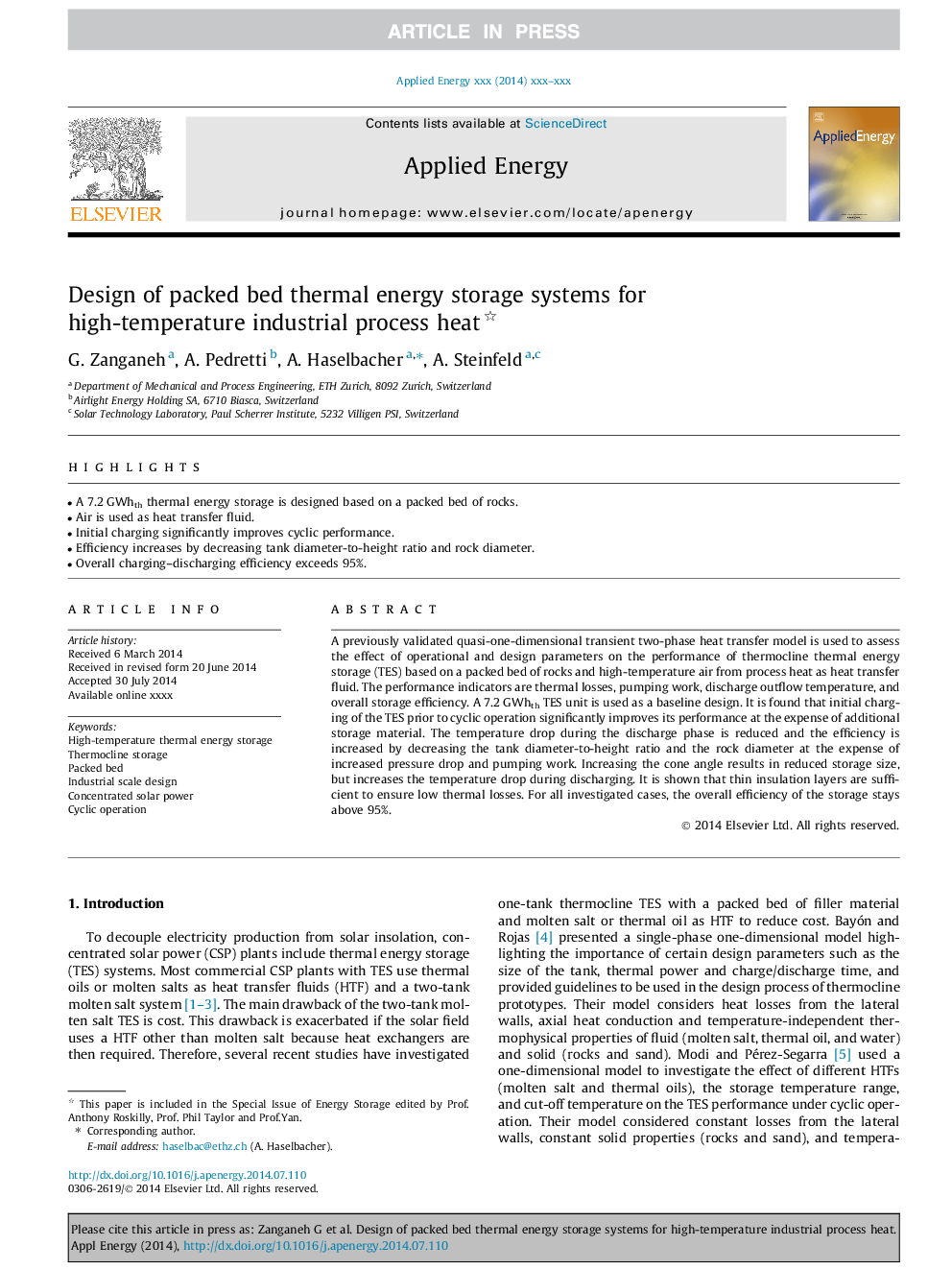| Article ID | Journal | Published Year | Pages | File Type |
|---|---|---|---|---|
| 6688905 | Applied Energy | 2015 | 11 Pages |
Abstract
A previously validated quasi-one-dimensional transient two-phase heat transfer model is used to assess the effect of operational and design parameters on the performance of thermocline thermal energy storage (TES) based on a packed bed of rocks and high-temperature air from process heat as heat transfer fluid. The performance indicators are thermal losses, pumping work, discharge outflow temperature, and overall storage efficiency. A 7.2Â GWhth TES unit is used as a baseline design. It is found that initial charging of the TES prior to cyclic operation significantly improves its performance at the expense of additional storage material. The temperature drop during the discharge phase is reduced and the efficiency is increased by decreasing the tank diameter-to-height ratio and the rock diameter at the expense of increased pressure drop and pumping work. Increasing the cone angle results in reduced storage size, but increases the temperature drop during discharging. It is shown that thin insulation layers are sufficient to ensure low thermal losses. For all investigated cases, the overall efficiency of the storage stays above 95%.
Related Topics
Physical Sciences and Engineering
Energy
Energy Engineering and Power Technology
Authors
G. Zanganeh, A. Pedretti, A. Haselbacher, A. Steinfeld,
